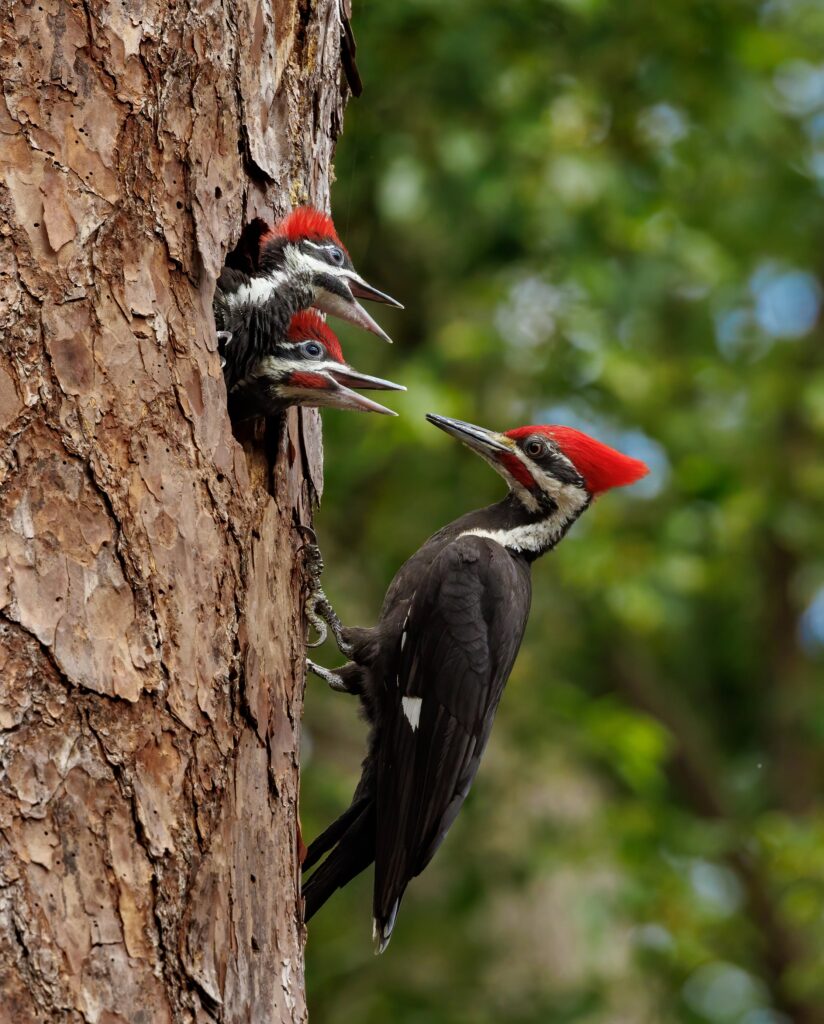What’s the Biggest Woodpecker in the World? Nature Study
Have you ever wondered which woodpecker holds the record for being the biggest in the world? In this No Sweat Nature Study Podcast episode, Mrs. Cindy shares fascinating facts about these incredible birds, including a surprising contender that might no longer exist and the reigning champion still found in North American forests today.
Children will love learning about the powerful pecking abilities, bold appearances, and curious calls of woodpeckers—especially the Pileated Woodpecker. With engaging storytelling, a science joke, and interactive questions, this bite-sized episode introduces nature lovers to the wonders of bird adaptations in a fun, memorable way.
Woodpecker Nature Study
Use these fun questions to test your family’s listening skills or spark meaningful conversations after the episode.
- What is the name of the possibly extinct, largest woodpecker?
Answer: The Imperial Woodpecker. - How long could an Imperial Woodpecker grow to be?
Answer: Over two feet long. - Which woodpecker holds the title for the largest living species today?
Answer: The Pileated Woodpecker. - How long is a typical adult Pileated Woodpecker?
Answer: Between 16 and 19 inches. - What’s the scientific name for the Pileated Woodpecker?
Answer: Dryocopus pileatus. - Why don’t woodpeckers get headaches from pecking?
Answer: Because their skulls have built-in shock absorbers. - What are two ways you might identify a Pileated Woodpecker in the wild?
Answer: By its wild, laughing call and its uneven pecking sounds. - What season does Mrs. Cindy mention as a great time to spot Pileated Woodpeckers?
Answer: Spring, because they’re busy nesting, mating, and caring for their babies.

Woodpecker Nature Study Video Class
In the upcoming No Sweat Nature Study video class about woodpeckers, tap into the amazing adaptations of these clever and hardworking birds! Investigate how woodpeckers use their strong beaks, sturdy tails, and shock-absorbing skulls to peck safely and skillfully. Learn about their habitats, feeding habits, and the surprising features—like extra-long tongues—that help them survive in the wild.
Students will create a nature journal page filled with fun facts and labeled illustrations of woodpecker adaptations during the class. It’s an exciting, hands-on way to reinforce learning and spark deeper curiosity about one of nature’s most fascinating birds!

Free Nature Observation Printable Packet for All Seasons
No matter what time of year you’re listening to this episode of the No Sweat Nature Study Podcast, here’s a printable pack of nature observation activities for every season of the year!
Would you like to record a voicemail to answer this season’s nature study question?
At the end of each No Sweat Nature Study Podcast episode, Mrs. Cindy includes messages from a few of her friends. You can record a message that she might use on an upcoming episode!
All children must have their parent’s permission before leaving a recording. Parents are welcome to record an answer, too!
Each season, there will be a different question to answer. You can see this season’s question below. Think about your answer first, and then follow these simple directions:
- Click the button that says “Start recording”.
- Tell me your first name. (If you want to tell your age and/or where you live, feel free to do that.)
- You will have 60 seconds to answer the question, but try to be concise.
- Push the play button to listen to your recording before sending it to be sure it is recorded correctly. If not, record it again.
Please leave a rating or a review on your podcast app! It helps the podcast to show up for more people…which means more families can enjoy science through the wonderful lens of nature study! Thank you!
